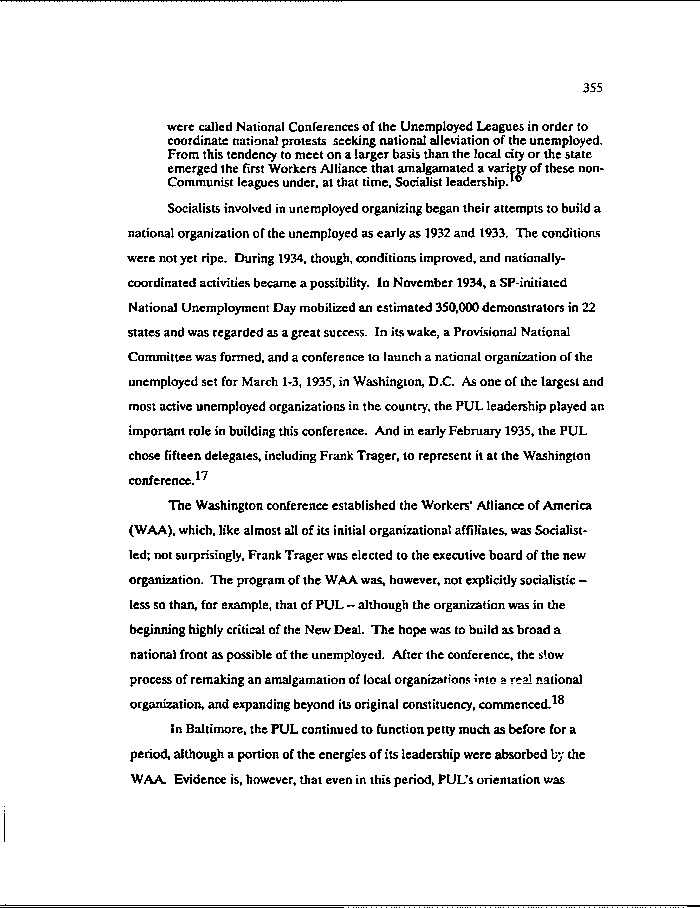|
355
were called National Conferences of the Unemployed Leagues in order to
coordinate national protests seeking national alleviation of the unemployed.
From this tendency to meet on a larger basis than the local city or the state
emerged the first Workers Alliance that amalgamated a variety of these non-
Communist leagues under, at that time, Socialist leadership.16
Socialists involved in unemployed organizing began their attempts to build a
national organization of the unemployed as early as 1932 and 1933. The conditions
were not yet ripe. During 1934, though, conditions improved, and nationally-
coordinated activities became a possibility. In November 1934, a SP-initiated
National Unemployment Day mobilized an estimated 350,000 demonstrators in 22
states and was regarded as a great success. In its wake, a Provisional National
Committee was formed, and a conference to launch a national organization of the
unemployed set for March 1-3,1935, in Washington, D.C. As one of the largest and
most active unemployed organizations in the country, the PUL leadership played an
important role in building this conference. And in early February 1935, the PUL
chose fifteen delegates, including Frank Trager, to represent it at the Washington
17
conference.1'
The Washington conference established the Workers' Alliance of America
(WAA), which, like almost all of its initial organizational affiliates, was Socialist-
led; not surprisingly, Frank Trager was elected to the executive board of the new
organization. The program of the WAA was, however, not explicitly socialistic -
less so than, for example, that of PUL - although the organization was in the
beginning highly critical of the New Deal. The hope was to build as broad a
national front as possible of the unemployed. After the conference, the slow
process of remaking an amalgamation of local organizations into a real national
organization, and expanding beyond its original constituency, commenced.***
In Baltimore, the PUL continued to function petty much as before for a
period, although a portion of the energies of its leadership were absorbed by the
WAA. Evidence is, however, that even in this period, PUL's orientation was
|

